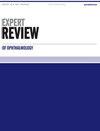改善中低收入国家眼科医疗服务的可及性--挑战、机遇和前进方向
IF 0.9
Q4 OPHTHALMOLOGY
引用次数: 0
摘要
ABSTRACT 引言 视力丧失是一项公共卫生挑战,对全球十多亿人造成了不利影响。与高收入国家相比,中低收入国家(LMICs)的视力丧失率高得不成比例。超过 80% 的视力损失可以通过眼镜或白内障手术来解决。这两种干预措施的成本都很低,而且具有成本效益。尽管如此,仍有一些障碍阻碍人们获得眼科保健服务。本文涉及获得眼科保健服务的各种因素(可接近性、可接受性、可负担性、可获得性和适当性),并介绍了阻碍低收入和中等收入国家获得眼科保健服务的障碍。本文还介绍了针对特定疾病的障碍以及应对可及性挑战的各种模式和策略,并特别提到了利用技术改善可及性的问题。专家意见 提供免费眼科护理、降低直接和间接成本等战略可改善白内障手术的可及性。虽然与白内障手术相关的可及性挑战已得到充分研究,但有关屈光不正和其他情况下的屈光服务可及性的信息却不足。未来的研究可以重点解决这一信息缺口。这将有助于制定战略,解决未矫正屈光不正和其他视力丧失原因造成的负担,并为实现眼健康全民覆盖做出贡献。使用的检索策略 在 2023 年 5 月 20 日至 27 日期间,我们在 Medline、CINHAL 和 PsycINFO 数据库中进行了文献检索,以确定报道寻求眼科保健障碍的相关文章。通过检索,筛选出相关文章进行数据提取。本文章由计算机程序翻译,如有差异,请以英文原文为准。
Improving access to eye care in low and middle-income countries – challenges, opportunities, and the way forward
ABSTRACT Introduction Vision loss is a public health challenge adversely affecting over a billion people worldwide. Low and middle income countries (LMICs) have a disproportionately higher prevalence of vision loss compared to high-income countries. Over 80% of vision loss can be addressed with either spectacles or cataract surgery. Both of these interventions are low cost and cost effective. Despite this, several barriers prevent individuals from accessing eye care. Areas covered This paper covers various elements of access (approachability, acceptability, affordability, availability and appropriateness) and presents barriers that prevent access to eye care services in LMICs. Disease-specific barriers and various models and strategies that address the accessibility challenges are presented with a special reference to the use of technology to improve access. Expert opinion Strategies such as providing free eye care, lowering direct and indirect costs, improve access to cataract surgery. While access-related challenges related to cataract surgery are well studied, there is inadequate information on access to refraction services for refractive errors and other conditions. Future research can focus on addressing this information gap. This can then help develop strategies to address the burden of uncorrected refractive errors and other causes of vision loss and contribute towards achieving universal eye health coverage. Search strategy used A literature search was carried out to identify the relevant articles reporting barriers to seeking eye care in the Medline, CINHAL and PsycINFO databases between 20 and 27 May 2023. From this search, the relevant articles were shortlisted for data extraction.
求助全文
通过发布文献求助,成功后即可免费获取论文全文。
去求助
来源期刊

Expert Review of Ophthalmology
Health Professions-Optometry
CiteScore
1.40
自引率
0.00%
发文量
39
期刊介绍:
The worldwide problem of visual impairment is set to increase, as we are seeing increased longevity in developed countries. This will produce a crisis in vision care unless concerted action is taken. The substantial value that ophthalmic interventions confer to patients with eye diseases has led to intense research efforts in this area in recent years, with corresponding improvements in treatment, ophthalmic instrumentation and surgical techniques. As a result, the future for ophthalmology holds great promise as further exciting and innovative developments unfold.
 求助内容:
求助内容: 应助结果提醒方式:
应助结果提醒方式:


